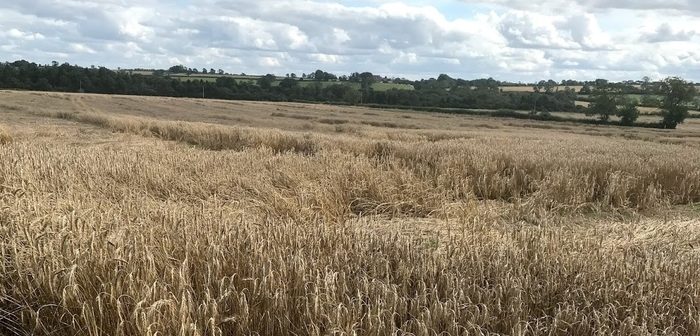Wet and difficult conditions continue to challenge harvest this week and many growers are still struggling to bring cereals in from the field. Even where harvest is possible, moisture contents generally remain high, leaving farmers facing high drying costs which can seriously cut their margins.
However, feed preservation specialists, Kelvin Cave Ltd, say there are numerous options for safely storing high moisture grain, at moisture contents from 16 to as much as 45 per cent. Some of these options make use of exactly the same storage facilities required for dry grain, while others require no more than a clamp or plastic tube.
“By choosing one of these alternative storage and preservation options, growers can harvest their cereals in much more difficult conditions, and avoid the continued losses associated with a late harvest,” says Michael Carpenter from Kelvin Cave Ltd.
“Every day that passes increases dry matter losses as grains become shrivelled, are infected with black moulds, and more are shed from the ear,” he says. “Chitting may also start to occur, which can seriously compromise the success of a traditional dry cereal harvest.”
He says that rather than worry about how to dry a crop, it is far better to combine at the earliest opportunity and find an alternative approach to preservation.
“As a rule of thumb, as long as your combine is capable of handling the straw, we can find you an option for grain preservation,” he says.
“For instance, if the ear is covered in black or sooty mould and the grain moisture is between 16 and 45 per cent, crimping the crop may be the best option, using a preservative from our CrimpSafe range.
“This will kill yeasts and moulds and allow the grain to be stored in airtight conditions such as a clamp, similar to one used for silage,” he says. “All that’s needed is a grain roller and applicator which many contractors will have if it’s not available on the farm.
“Alternatively, some contractors have machines which bag into tubes, creating cheap extra storage space on almost any flat area.”
Other preservation options allow the grain to be stored in a heap in a shed, if that type of storage is preferred.
“It is basically horses for courses and once we know the moisture of your crop, its potential end use, and the storage facilities at your disposal, we can always make a recommendation,” he says.
“We have dealt with these situations on many occasions and been able to salvage crops at a far higher yield and quality than would be achieved by waiting,” he says. “These are tried- and-tested procedures, developed in Northern Europe, which many farmers across the world are using successfully.
“They are far more reliable than many alternative options, including desiccating a crop with glyphosate, which limits the harvest window, is fraught with difficulties and raises environmental questions.
“They are also perfect for the many farmers who have secondary tillering in their crops and are faced with harvesting grain at variable maturity.
“We also know from AHDB data that around 80 per cent of the large spring barley area growing this year is yet to be harvested, and moist preservation will be perfect in this situation.
“Furthermore, moist harvested grain can be used in livestock feed, in anaerobic digestion and is suitable for farm-to-farm trading,” he says.
For advice about options for grain preservation, please contact Kelvin Cave Ltd on 01458 252281 or Michael Carpenter on 07817 977701.




